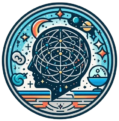Introduction
Conspiracy theories have existed for centuries, influencing public opinion and shaping political and social landscapes. From the belief that the moon landing was faked to fears of global elites orchestrating world events, conspiracy theories thrive in modern discourse, particularly in the digital age. But why do people believe in misinformation, even when evidence contradicts these claims? Psychological research suggests that cognitive biases, social identity, emotional factors, and distrust in institutions all contribute to the persistence of conspiracy beliefs.
Read More- Brain Rots and Ways to Deal with It
Cognitive Biases and Conspiracy Thinking
Several cognitive biases influence how individuals process information and contribute to belief in conspiracy theories:
1. Pattern Recognition and Agency Detection
Humans have an innate tendency to recognize patterns, even when none exist. This cognitive bias, known as apophenia, leads people to perceive connections between unrelated events, making conspiracy theories appear plausible (Shermer, 2011). Additionally, hyperactive agency detection causes individuals to attribute events to intentional actions rather than chance, reinforcing the idea that powerful groups orchestrate major events (Barkun, 2013).
2. Confirmation Bias
Once individuals adopt a belief, they seek out information that supports it while ignoring contradictory evidence. This phenomenon, known as confirmation bias, strengthens conspiracy thinking by reinforcing existing beliefs (Nickerson, 1998). Social media algorithms exacerbate this effect by curating content that aligns with users’ preferences, creating “echo chambers” that limit exposure to opposing viewpoints (Sunstein, 2017).
3. Proportionality Bias
People tend to believe that significant events must have equally significant causes. This proportionality bias makes conspiracy theories appealing, as they provide seemingly grand explanations for complex events (Lagnado & Sloman, 2004). For instance, many find it hard to accept that a lone gunman assassinated a prominent leader, preferring instead to believe in a larger conspiracy.
Emotional and Psychological Motivations
Beyond cognitive biases, emotional and psychological factors drive conspiracy thinking:
1. Uncertainty and Anxiety
Conspiracy theories often flourish during periods of crisis, such as pandemics or political upheavals, when people seek explanations for uncertainty (van Prooijen & Douglas, 2017). Research shows that individuals experiencing anxiety and lack of control are more likely to endorse conspiracy beliefs as a coping mechanism (Whitson & Galinsky, 2008).
2. Social Identity and Group Belonging
Belief in conspiracy theories is often linked to social identity. Individuals who feel marginalized or distrustful of mainstream institutions may find comfort in alternative explanations that validate their worldview (Douglas et al., 2019). Conspiracy theories can create a sense of belonging within groups that share similar beliefs, reinforcing group identity and cohesion (Jolley & Douglas, 2014).
3. Distrust in Authority
Conspiracy theories thrive when trust in government, media, and science is low. People who perceive institutions as corrupt or manipulative are more susceptible to alternative narratives that challenge official accounts (Imhoff & Bruder, 2014). Historical instances of deception, such as the Watergate scandal, contribute to a general skepticism that fuels belief in future conspiracies (Oliver & Wood, 2014).

The Role of Social Media in Spreading Misinformation
The digital age has transformed the way misinformation spreads. Social media platforms enable conspiracy theories to reach global audiences at unprecedented speeds. Factors contributing to their rapid dissemination include:
- Algorithmic Amplification: Platforms prioritize engaging content, often favoring sensationalist conspiracy theories over factual reporting (Vosoughi et al., 2018).
- Virality and Echo Chambers: Online communities reinforce beliefs by isolating members from contradictory evidence (Del Vicario et al., 2016).
- Influencers and Misinformation Networks: Prominent figures can spread conspiracy theories to millions, lending credibility to false claims (Lewandowsky et al., 2013).
Combating Misinformation and Conspiracy Thinking
Addressing conspiracy theories requires a multi-faceted approach-
1. Promoting Media Literacy
Teaching critical thinking skills can help individuals differentiate between reliable sources and misinformation. Encouraging skepticism toward unverified claims reduces susceptibility to conspiracy theories (Lewandowsky et al., 2020).
2. Encouraging Open Dialogue
Rather than dismissing conspiracy believers outright, engaging in respectful discussions can be more effective. Research suggests that gently questioning the logic behind conspiracy theories can encourage self-reflection (Cook et al., 2017).
3. Strengthening Trust in Institutions
Transparency and accountability in governance, media, and science can help rebuild public trust, reducing the appeal of alternative explanations (van der Linden et al., 2021).
Conclusion
Conspiracy theories persist due to a combination of cognitive biases, emotional needs, social identity, and distrust in authority. The rise of digital platforms has further fueled the spread of misinformation, making it more challenging to combat. Understanding the psychology behind conspiracy thinking is crucial for developing strategies to address misinformation effectively. By promoting media literacy, fostering open discussions, and restoring institutional trust, society can work toward reducing the impact of conspiracy theories.
References
Barkun, M. (2013). A Culture of Conspiracy: Apocalyptic Visions in Contemporary America. University of California Press.
Cook, J., Lewandowsky, S., & Ecker, U. K. (2017). Neutralizing misinformation through inoculation: Exposing misleading argumentation techniques reduces their influence. PLoS ONE, 12(5), e0175799.
Del Vicario, M., Bessi, A., Zollo, F., et al. (2016). The spreading of misinformation online. Proceedings of the National Academy of Sciences, 113(3), 554-559.
Douglas, K. M., Sutton, R. M., & Cichocka, A. (2019). The psychology of conspiracy theories. Current Directions in Psychological Science, 26(6), 538-542.
Imhoff, R., & Bruder, M. (2014). Speaking (un-)truth to power: Conspiracy mentality as a generalised political attitude. European Journal of Personality, 28(1), 25-43.
Jolley, D., & Douglas, K. M. (2014). The social consequences of conspiracism: Exposure to conspiracy theories decreases intentions to engage in politics and reduces trust in democratic institutions. British Journal of Psychology, 105(1), 35-56.
Lagnado, D. A., & Sloman, S. A. (2004). The advantage of timely intervention. Journal of Experimental Psychology: Learning, Memory, and Cognition, 30(4), 856-876.
Lewandowsky, S., Ecker, U. K., & Cook, J. (2013). Misinformation and its correction: Continued influence and successful debiasing. Psychological Science in the Public Interest, 13(3), 106-131.
Nickerson, R. S. (1998). Confirmation bias: A ubiquitous phenomenon in many guises. Review of General Psychology, 2(2), 175-220.
Oliver, J. E., & Wood, T. J. (2014). Conspiracy theories and the paranoid style(s) of mass opinion. American Journal of Political Science, 58(4), 952-966.
Shermer, M. (2011). The Believing Brain: How We Construct Beliefs and Reinforce Them as Truths. Henry Holt and Company.
Sunstein, C. R. (2017). #Republic: Divided Democracy in the Age of Social Media. Princeton University Press.
van der Linden, S., Roozenbeek, J., & Compton, J. (2021). Inoculating against fake news about COVID-19. Frontiers in Psychology, 12, 648064.
van Prooijen, J. W., & Douglas, K. M. (2017). Conspiracy theories as part of history: The role of societal crisis situations. Memory Studies, 10(3), 323-333.
Vosoughi, S., Roy, D., & Aral, S. (2018). The spread of true and false news online. Science, 359(6380), 1146-1151.
Whitson, J. A., & Galinsky, A. D. (2008). Lacking control increases illusory pattern perception. Science, 322(5898), 115-117.
Subscribe to PsychUniverse
Get the latest updates and insights.
Join 3,030 other subscribers!
Niwlikar, B. A. (2025, March 20). Conspiracy Theories and 3 Important Ways to Combat It. PsychUniverse. https://psychuniverse.com/conspiracy-theories/



